Finding a peaceful place to stretch, breathe, and reconnect is easier than ever thanks to the growing number of yoga spots in the UAE. Whether your idea of bliss is saluting the sun by the sea, practising among lush greenery, or sinking into a deep pose in a serene studio, the Emirates offers an inspiring mix of environments for every yogi. This guide takes you through some of the most beautiful and accessible yoga spots in the UAE, from Dubai to Abu Dhabi and beyond.
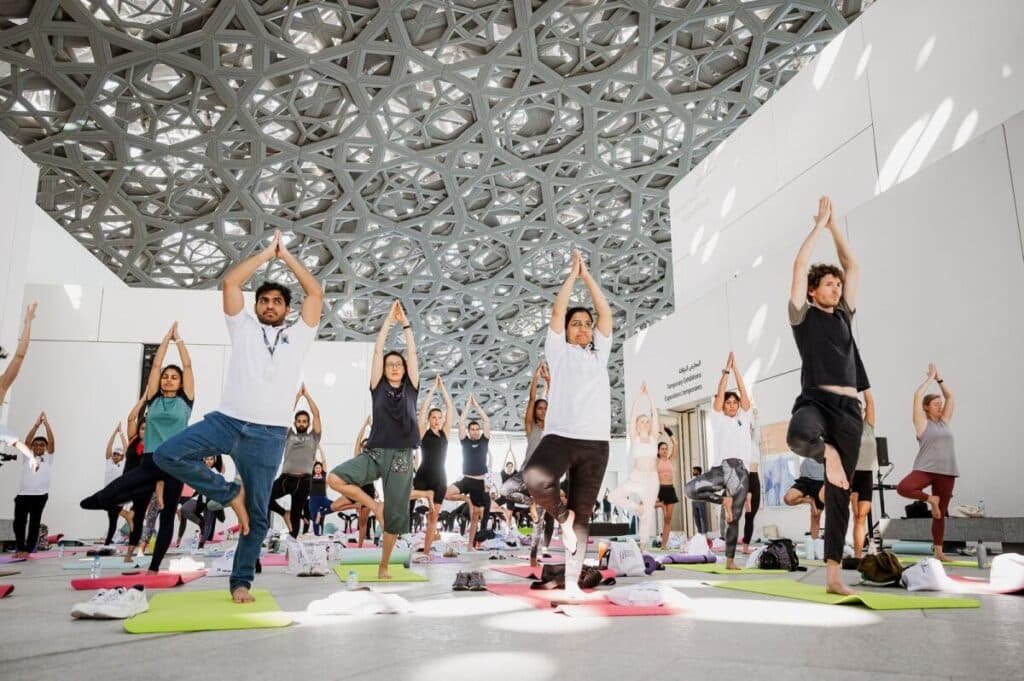
Beachfront Bliss: Yoga by the Sea
1. Kite Beach, Dubai
The rhythmic sound of waves sets the perfect tempo for an energising or restorative flow at Kite Beach. Early mornings here are magical — with the sun rising over the water, the sand still cool, and only the occasional jogger passing by. Local instructors often run sunrise and sunset sessions, so you can sync your breath with the tide.
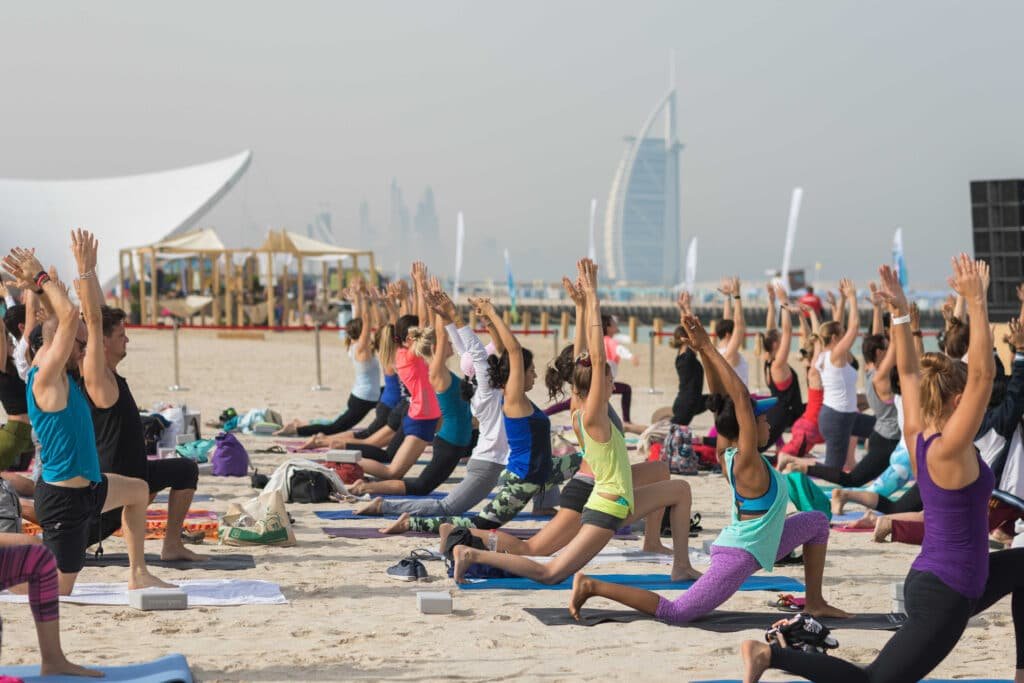
2. Corniche Beach, Abu Dhabi
With its immaculate stretch of sand and uninterrupted views of the Arabian Gulf, Corniche Beach offers a naturally calming space for practice. Shaded areas nearby make it easy to linger after class, and its blend of natural beauty and urban convenience draws both committed yogis and curious newcomers.
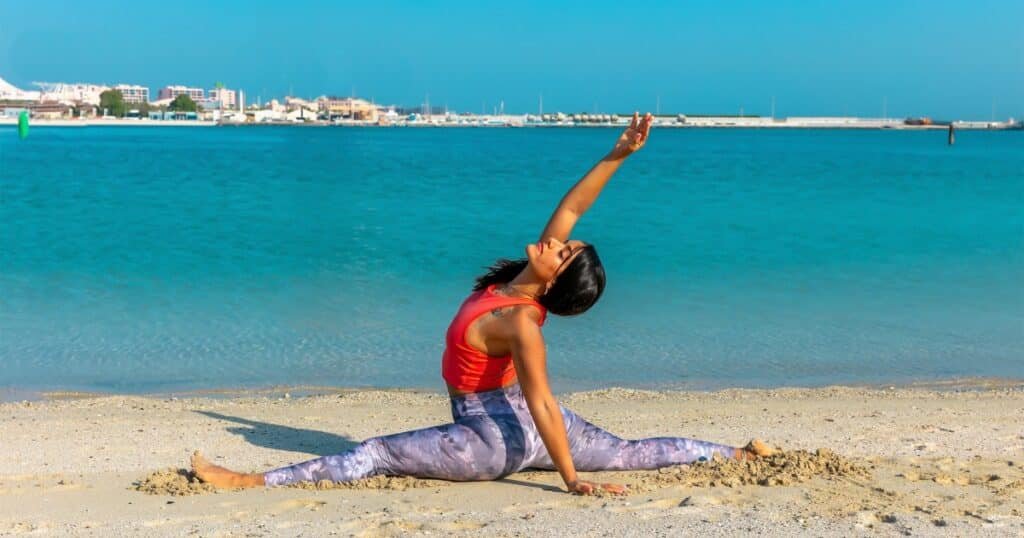
Urban Retreats: Yoga in the City
3. Dubai Marina Walk
There’s something special about rolling out your mat with gleaming skyscrapers on one side and tranquil water on the other. Evening yoga sessions here offer cooler air and a backdrop of city lights, making it a lively yet meditative space for both locals and visitors.
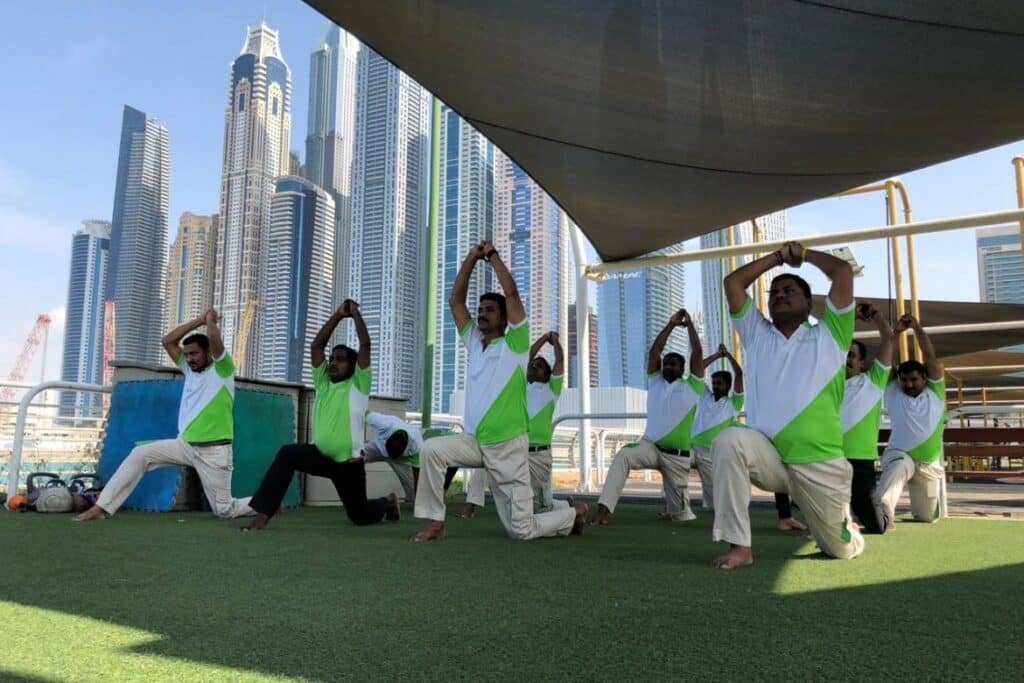
4. Umm Suqeim Park, Dubai
Close to the iconic Burj Al Arab, this park offers shaded lawns that feel worlds away from the traffic outside. It’s a spot where parents can bring children to play while slipping in a rejuvenating practice of their own.

Luxurious Escapes: Yoga in Exclusive Resorts
5. Talise Spa at Burj Al Arab, Dubai
Practising yoga with the Arabian Gulf as your horizon is a luxury that Talise Spa delivers effortlessly. From gentle Hatha to flowing Vinyasa, each class is enhanced by the serene atmosphere and world-class facilities.
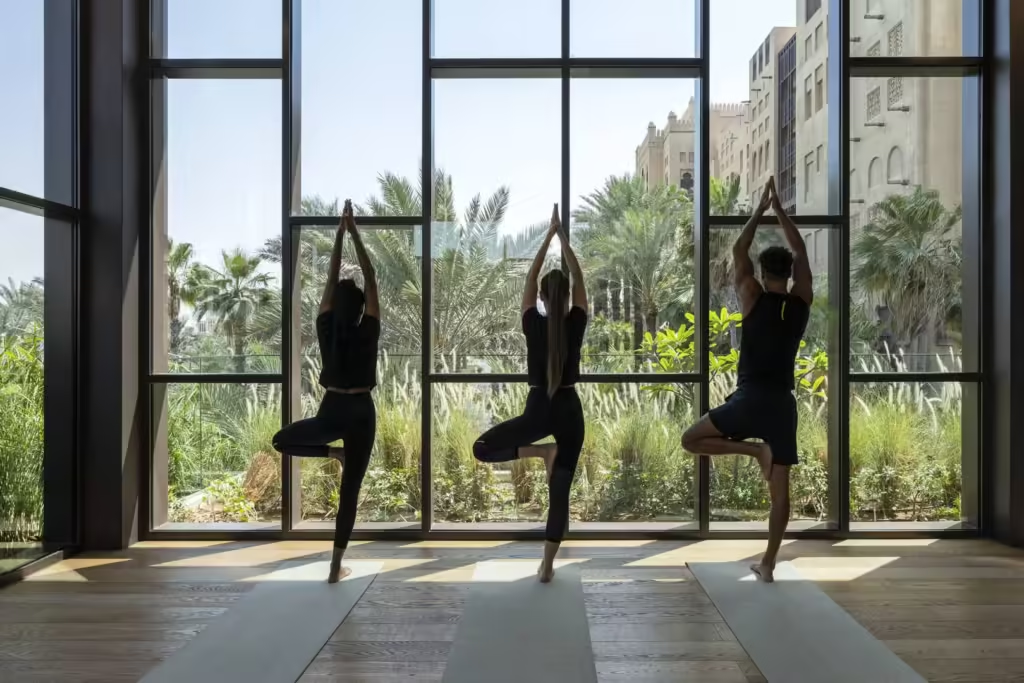
6. Anantara The Palm Dubai Resort
On the Palm’s eastern crescent, Anantara’s yoga pavilion sits just steps from turquoise waters. Wellness here is holistic — daily classes, spa therapies, and the gentle hush of the sea combine for an experience that feels restorative from the first breath.

Nature’s Haven: Yoga in Parks and Gardens
7. Mushrif Park, Dubai
Sprawling lawns, shaded groves, and birdsong make Mushrif Park a nature lover’s dream. It’s a favourite for morning flows before the day warms up, offering a gentle escape from city life.
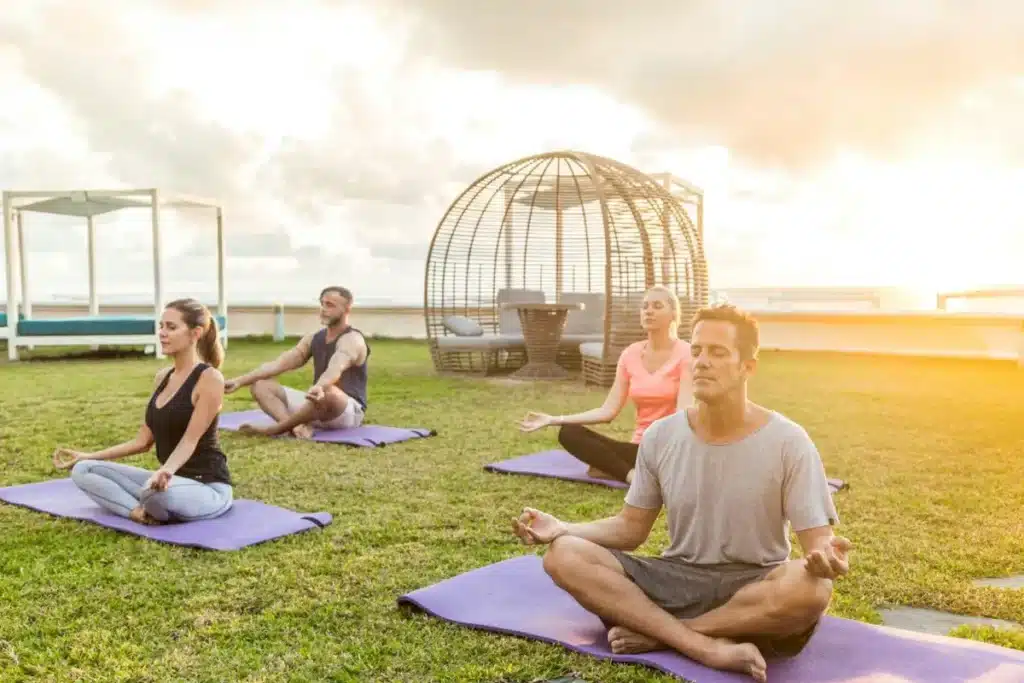
8. Al Ain Oasis, Al Ain
Here, centuries-old irrigation channels weave between 147,000 date palms, creating dappled light and a soothing microclimate. Practising in this UNESCO World Heritage site connects you to the land’s history while nurturing body and mind.

Yoga Studios: Professional Guidance and Community
9. Yoga House, Dubai
Known for its friendly atmosphere and varied class styles, Yoga House is a hub for everyone from beginners to seasoned practitioners. Expect high-quality instruction and a community vibe that keeps students coming back.
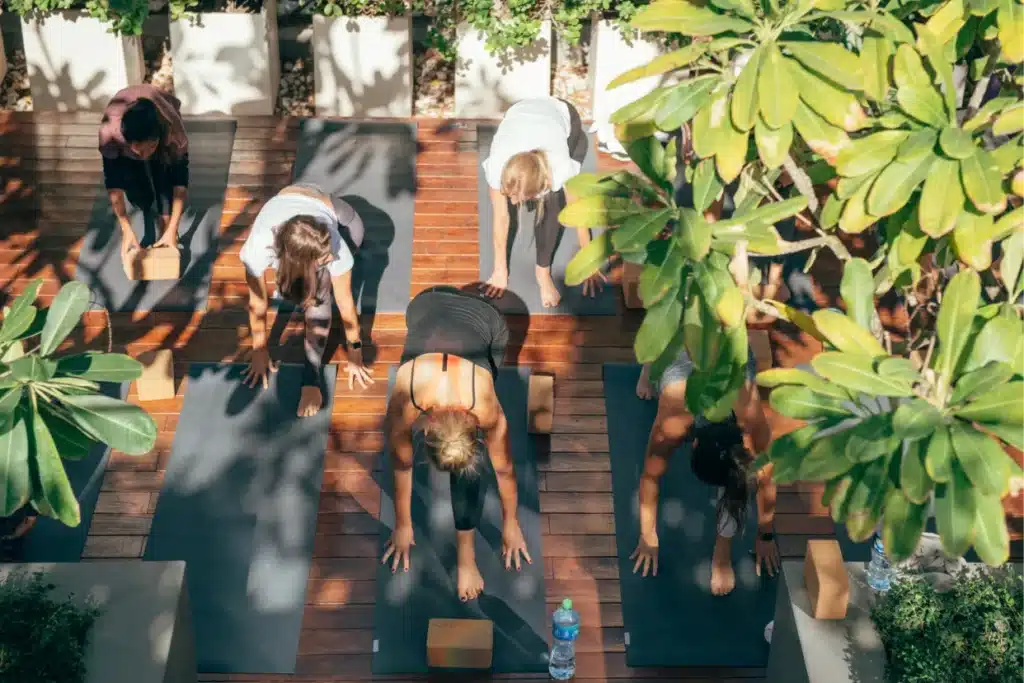
10. Bodytree Studio, Abu Dhabi
This wellness haven offers everything from prenatal yoga to energising flows. Its holistic approach and supportive teachers make it a cornerstone of the capital’s yoga community.
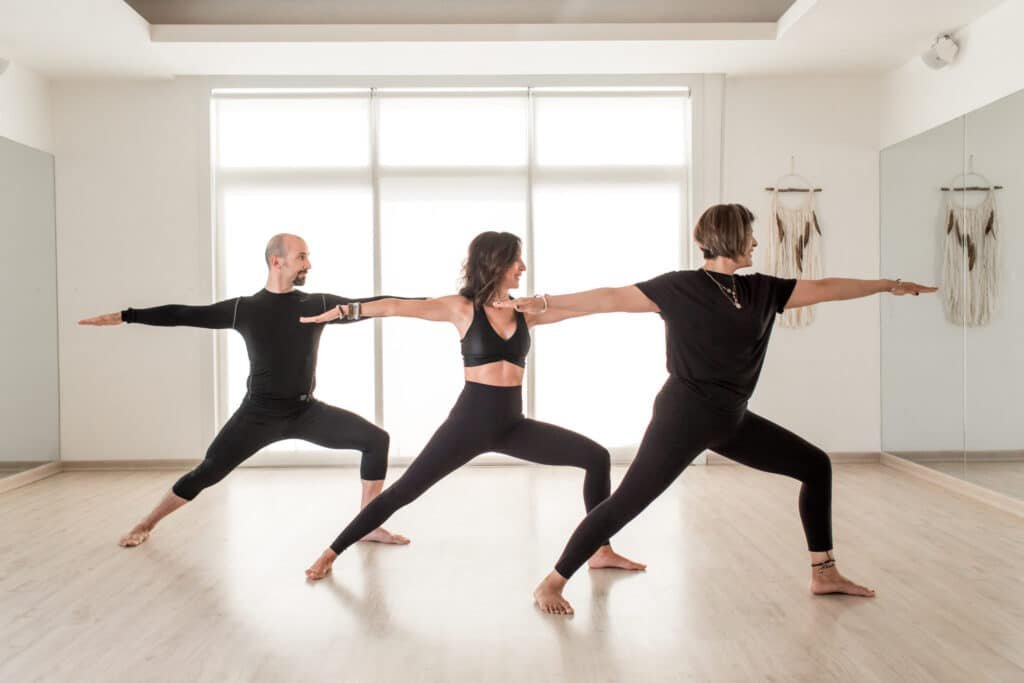
The Stretch
From sandy shores to shaded oases, the yoga spots in the UAE are as diverse as the people who practise in them. Whether you’re chasing a sunrise stretch, craving a lunchtime recharge, or seeking the guidance of a seasoned teacher, the Emirates provides countless ways to keep your practice alive and inspired.



